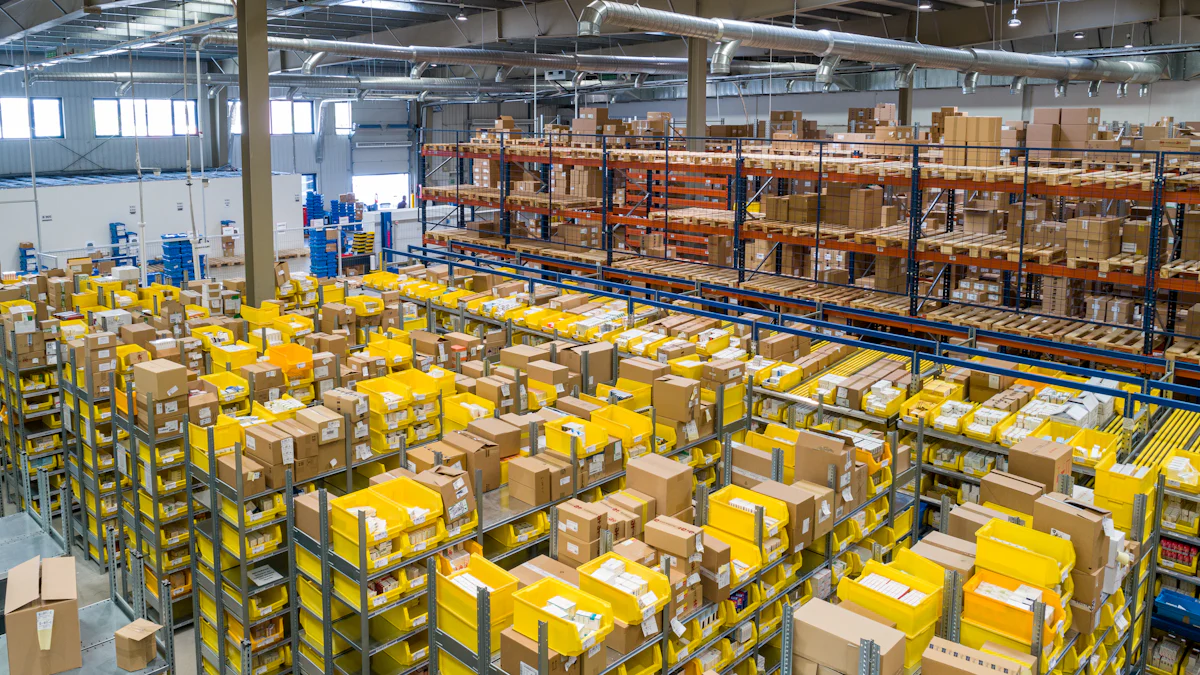The Benefits of Logistics Integration in International Warehousing

Logistics integration combines various logistics functions to create a seamless supply chain. International warehousing involves storing goods in different countries to facilitate global trade. Logistics integration plays a crucial role in global supply chains by enhancing efficiency and reducing costs. The global logistics market is projected to grow from $8.96 trillion in 2023 to $18.23 trillion by 2030. This growth highlights the importance of logistics integration. Businesses benefit from improved visibility, real-time tracking, and better customer service through logistics integration.
Understanding Logistics Integration
Definition and Key Concepts
Logistics integration involves the coordination of logistics activities. Businesses align transportation, warehousing, and inventory management to create a seamless flow of goods. This coordination ensures that each part of the supply chain works together efficiently. Logistics integration streamlines operations by eliminating unnecessary steps. Companies reduce delays and minimize errors through this approach.
Streamlining operations involves using technology and best practices. Businesses implement software solutions to automate tasks. Automation reduces manual labor and increases accuracy. Streamlined operations lead to faster processing times and improved service delivery.
Functionality in International Warehousing
Logistics integration plays a vital role in global supply chains. Companies manage international warehousing more effectively with integrated logistics. This approach enhances the movement of goods across borders. Businesses benefit from improved material flows and cost efficiency. A study in the Journal of Quality Innovation highlights that logistics integration positively influences supply chain performance.
The impact on warehousing efficiency is significant. Integrated logistics optimizes storage and retrieval processes. Companies use advanced systems to track inventory in real-time. Real-time tracking ensures accurate stock levels and timely replenishments. Efficient warehousing operations result in better customer satisfaction.
Logistics integration fosters trust and commitment among supply chain partners. Strong relationships lead to more responsive operations. The Journal of Quality Innovation emphasizes that trust and satisfaction enhance logistics integration. Businesses achieve greater value streams through these collaborative efforts.
Components of Logistics Integration
Technological Tools
Software Solutions
You can leverage logistics software to enhance supply chain operations. Real-time tracking and inventory management become possible with these tools. Businesses use logistics management software to automate tasks. This automation provides data for informed decisions. Descartes Systems offers extensive logistics routing software. These systems optimize routes and track vehicles in real-time. Companies minimize delays and improve efficiency through these solutions.
Automation Technologies
Automation technologies play a crucial role in logistics integration. Businesses implement logistics automation to streamline operations. Tasks like transportation, warehousing, and inventory management become more efficient. ERP integration enhances visibility and operational excellence. Companies achieve better coordination with integrated systems. The use of modular and scalable architectures allows easy customization. Businesses benefit from seamless data flow with ERP, CRM, and e-commerce platforms.
Human Resources
Training and Development
Training and development ensure that staff can effectively use logistics technologies. Employees gain skills necessary for operating advanced systems. Companies invest in training programs to enhance workforce capabilities. Training focuses on using software solutions and automation technologies. Businesses see improved performance and reduced errors through skilled personnel.
Collaborative Teams
Collaborative teams drive success in logistics integration. Businesses form teams that work together across various functions. Collaboration fosters better communication among team members. Companies achieve more responsive operations with collaborative efforts. Strong teamwork leads to enhanced logistics integration. Businesses benefit from shared knowledge and expertise within teams.
Advantages of Logistics Integration

Improved Efficiency
Logistics integration enhances operational efficiency. Businesses experience reduced operational costs through streamlined processes. Companies achieve cost savings by optimizing route planning and reducing fuel consumption. Inventory holding costs decrease with better inventory management. Labor allocation becomes more efficient, leading to lower expenses.
Faster delivery times result from logistics integration. Companies use advanced logistics systems to refine route planning. Load balancing optimization ensures timely deliveries. Businesses adapt quickly to changing conditions, improving delivery speed. Customers receive orders faster, enhancing satisfaction.
Enhanced Customer Satisfaction
Reliable service delivery is a key benefit of logistics integration. Companies provide consistent and dependable services. Real-time data analytics optimize operations, ensuring accurate order fulfillment. Businesses maintain high standards in service delivery, building trust with customers.
Increased transparency improves customer satisfaction. Integrated logistics offers better supply chain visibility. Customers track shipments in real-time, gaining confidence in the process. Businesses share valuable information with customers, fostering transparency. Enhanced communication strengthens customer relationships.
Competitive Advantage
Market responsiveness improves with logistics integration. Companies respond swiftly to market demands. Integration reduces supply chain uncertainties, allowing quick adaptations. Businesses gain a competitive edge by staying ahead of market trends. Responsive operations meet customer needs effectively.
Innovation in logistics solutions provides a competitive advantage. Companies leverage high-end logistics systems to reduce costs. Technology integration streamlines business processes. Businesses achieve consistency across systems, enhancing performance. Innovative logistics solutions drive success in competitive markets.
Implementing Logistics Integration
Steps for Successful Integration
Assessing Current Logistics Processes
Begin logistics integration by evaluating current logistics processes. Identify inefficiencies and areas for improvement. Analyze transportation, warehousing, and inventory management. Use data to understand performance gaps. This assessment provides a clear picture of existing operations.
Focus on enhancing supply chain performance. Address inefficiencies to streamline operations. Use insights to guide integration efforts. A comprehensive evaluation ensures a solid foundation for integration.
Selecting Appropriate Technologies
Choose technologies that align with logistics goals. Consider software solutions for automation and real-time tracking. Evaluate options for inventory management and route optimization. Select tools that enhance decision-making and customer service.
Technological integration minimizes delays and curtails expenses. Implement systems that foster order fulfillment. Ensure chosen technologies support seamless data flow. Proper selection leads to successful logistics integration.
Overcoming Challenges
Addressing Resistance to Change
Overcome resistance to change by fostering a culture of collaboration. Educate employees about the benefits of logistics integration. Highlight improvements in efficiency and customer satisfaction. Encourage open communication and feedback.
Involve staff in the integration process. Provide training to build confidence in new systems. Support teams as they adapt to changes. Addressing resistance ensures smooth implementation and acceptance.
Ensuring Data Security
Prioritize data security during logistics integration. Protect sensitive information from unauthorized access. Implement robust security measures for data storage and transmission. Regularly update systems to address vulnerabilities.
Data security enhances trust among stakeholders. Secure systems ensure reliable operations. Emphasize the importance of safeguarding information. A strong security framework supports successful logistics integration.
Logistics integration offers numerous benefits. Businesses experience improved efficiency, reduced costs, and enhanced customer satisfaction. The adoption of integration strategies becomes crucial for staying competitive in the global market. Companies should embrace these strategies to optimize operations and foster long-term partnerships. Testimonials from satisfied customers highlight the reliability and consistency of integrated logistics services. The future of international warehousing looks promising with continued advancements in technology and logistics solutions. Embrace logistics integration to achieve success in the ever-evolving global supply chain landscape.
See Also
Boosting Warehouse Efficiency with Logistics Robotics
Transforming Supply Chain with Logistics Innovations
Future-Proofing Logistics with AI in the Supply Chain
